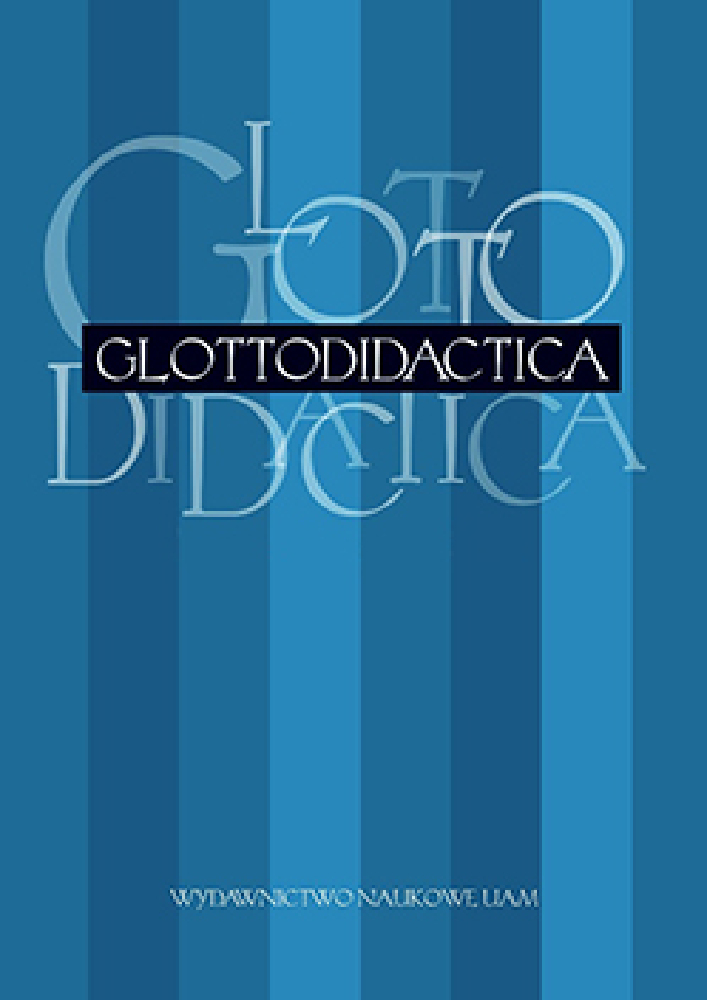Abstrakt
This study uses the Interactive Learning Model theory to explore the nature of self-awareness within each of three L2 learners. Using the Learning Connections Inventory (LCI), a validated and reliable learning instrument, each participant identified their combination of learning patterns. The subjects then recalled specific L2 learning experiences, relating them in first person narratives. Next, each subject composed anecdotes and reflections based on their narratives. They also participated in one-on-one interviews in which they described their learning experiences during basic L2 learning activities: vocabulary, grammar, writing, conversation, and passive listening during movies, live theatre, spectator sports, and television. Our analysis of the LCI outcomes and selfreported learning experiences demonstrated that the self-awareness gained from understanding their combination of learning patterns and expanded by the self-reflection activities, increased the participants’ ability to articulate the nature of their self-awareness and to identify evidence of their growth in self-awareness during L2 learning.
Bibliografia
Auchère, N. (2021). Personal interview, February 3, 2021. Orléans.
Borkowski, J.G. / Carr, M. / Rellinger, E. / Pressley, M. (1990). Self-regulated cognition: Interdependence of metacognition, attributions, and self-esteem. In: B.F. Jones / L. Idol (eds.), Dimensions of thinking and cognitive instruction (pp. 53–92). Hillsdale, NJ: Lawrence Erlbaum Associates, Inc.
Camilleri, A. (2003). Learner autonomy in modern language learning: Find your bearing and pick your way. Presented at the LML Summer Institute. Swedesboro, NJ.
Flavell, J. (1979). Metacognition and cognitive monitoring. A new area of psychological inquiry. American Psychologist, 34, 906–911.
Hennessey, M.G. (1999). Probing the dimensions of metacognition: Implications for conceptual changes in teaching and learning. Paper presented at the Annual Meeting of the National Association for Research in Science Teaching (NARST). Boston, MA.
Johnston, C. (1994). The interactive learning model. Paper presented at the meeting of the British Education Research Association. Oxford University, Queen Anne’s College, Oxford.
Johnston, C. / Dainton, G. (1997). The learning combination inventory. Thousand Oaks, CA: Corwin.
Johnson, M. (2016). Elements of second language learning. https://www.youtube.com/watch?v=CMdseB-EB8Y [access: 15.09.2021].
Klein, G.B. (2007). SPICES GUIDELINES. A training methodology for intercultural communication in institutional settings. Perugia: Key & Key Communications.
Klein, G.B. (2021). DREAMM – Develop and Realise Empowering Actions for Mentoring Migrants. New ways of bringing together newly arrived Third-Country Nationals and local communities.957882 – DREAMM – AMIF-2019-AG-CALL.
Klein, G.B. / Calleja, C. / Gelfgren, V. / Ravenda, A. (2016). RADAR (Regulating AntiDiscrimination and AntiRacism) Trainers’ Manual. Anti-hate communication tools in an intercultural perspective. Deruta / Perugia: Key & Key Communications.
Klein, G.B. / Szczepaniak-Kozak, A. (2014). L2 textbook evaluation in view of L2 adult learners’ real communication needs: A study of bureaucratic-institutional communication skills. In: E. Wąsikiewicz-Firlej / H.A. Lankiewicz / A. Szczepaniak-Kozak (eds.), Culture and creativity in discourse studies and foreign language pedagogy (pp. 93–115). Piła: Wydawnictwo PWSZ im. S. Staszica w Pile.
Krashen, S.D. (1982). Principles and practice in second language acquisition. Oxford: Pergamon Press.
McSweeney, T. (2005). Merging cognitive and instructional theories: Implementation of an advanced learning system in secondary mathematics. New York: Hofstra University.
National Research Council (NRC) (1999). How people learn: Bridging research and practice. M.S. Donovan / J.D. Bransford, / J.W. Pellegrino (eds.). Washington, DC: The National Academies Press.
Newell, J. /Dahm, K. / Harvey, R. (2004). Developing metacognitive engineering teams. Chemical Engineering Education, Fall 38 (4), 316–320.
Paris, S.G. / Winograd, P. (1990). How metacognition can promote academic learning and instruction. In: B.F. Jones / L. Idol (eds.), Dimensions of thinking and cognitive instruction (pp. 15–51). Hillsdale, NJ: Erlbaum.
Pattoia, M. (2009). Il Let Me Learn Process® come strumento integrabile in un sistema di eLearning adattivo. VEGA – Periodico elettronico di cultura, didattica e formazione, V (3).
Scanlon, E. (2004). Reconsidering science learning. Hove: Psychology Press.
Schütz, R.E. (2019). Stephen Krashen’s Theory of second language acquisition. English Made in Brazil. https://www.sk.com.br/sk-krash-english.html [access: 15.09.2021].
Snow, R.E. / Corno, L. / Jackson, D. (1996). Individual differences in affective and conative functions. In: D.C. Berliner / R.C. Calfee (eds.), Handbook of educational psychology (pp. 243–310). New York, NY: Macmillan.
Ward, N. (2009). The influence of a metacognitive learning system on the writing achievement of elementary school students. South Orange, NJ: Seton Hall University.
Licencja
 Utwór dostępny jest na licencji Creative Commons Uznanie autorstwa – Bez utworów zależnych 4.0 Międzynarodowe.
Utwór dostępny jest na licencji Creative Commons Uznanie autorstwa – Bez utworów zależnych 4.0 Międzynarodowe.
Autorzy
Autorzy tekstów przyjętych do publikacji w czasopiśmie Glottodidactica są zobowiązani do wypełnienia, podpisania i odesłania na adres redakcji umowy o udzielenie nieodpłatnej licencji do utworów, z zobowiązaniem do udzielania sublicencji CC.
Zgodnie z umową, autorzy tekstów opublikowanych w czasopiśmie Glottodidactica udzielają Uniwersytetowi im. Adama Mickiewicza w Poznaniu niewyłącznej i nieodpłatnej licencji oraz zezwalą na użycie sublicencji Creative Commons Attribution-NoDerivatives 4.0 International (CC BY-ND 4.0).
Autorzy zachowują prawa do dalszego, swobodnego rozporządzania utworem.
Użytkownicy
Zainteresowani użytkownicy internetu uprawnieni są do korzystania z utworów opublikowanych od 2015 roku w Glottodidactica pod następującymi warunkami:
- uznanie autorstwa - obowiązek podania wraz z rozpowszechnionym utworem, informacji, o autorstwie, tytule, źródle (odnośniki do oryginalnego utworu, DOI) oraz samej licencji;
- bez tworzenia utworów zależnych - utwór musi być zachowany w oryginalnej postaci, nie można bez zgody twórcy rozpowszechniać np. tłumaczeń, opracowań.
Do wszystkich tekstów opublikowanych przed 2015 r. prawa autorskie są zastrzeżone.
Inne
Uniwersytet im. Adama Mickiewicza w Poznaniu zachowuje prawo do czasopisma jako całości (układ, forma graficzna, tytuł, projekt okładki, logo itp.).
Autorzy zachowują prawa do dalszego, swobodnego rozporządzania utworem.
Użytkownicy
Zainteresowani użytkownicy internetu uprawnieni są do korzystania z utworów opublikowanych od 2015 roku w Glottodidactica pod następującymi warunkami:
- uznanie autorstwa - obowiązek podania wraz z rozpowszechnionym utworem, informacji, o autorstwie, tytule, źródle (odnośniki do oryginalnego utworu, DOI) oraz samej licencji;
- bez tworzenia utworów zależnych - utwór musi być zachowany w oryginalnej postaci, nie można bez zgody twórcy rozpowszechniać np. tłumaczeń, opracowań.
Do wszystkich tekstów opublikowanych przed 2015 r. prawa autorskie są zastrzeżone.
Inne
Uniwersytet im. Adama Mickiewicza w Poznaniu zachowuje prawo do czasopisma jako całości (układ, forma graficzna, tytuł, projekt okładki, logo itp.).





